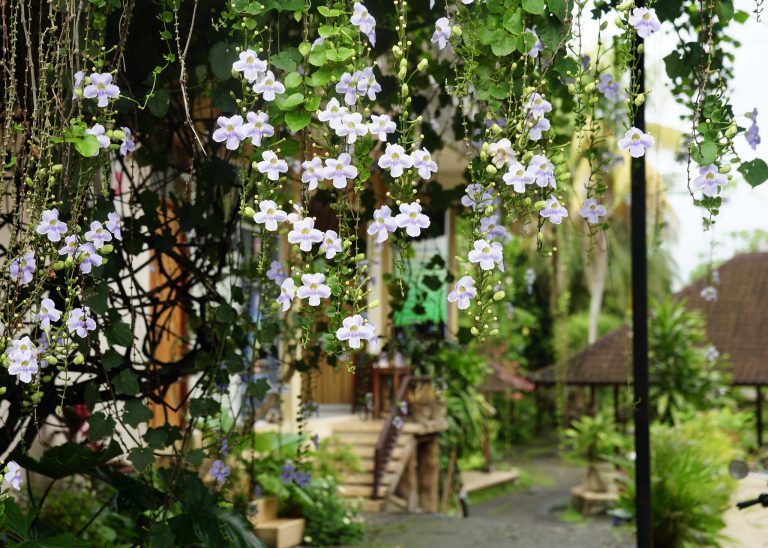You may have wondered what gives a good jasmine tea that intoxicating fragrance and heavenly flavor. Simply put, it is the lovely jasmine flower, a fragrant blossom produced by the viney, perennial jasmine plant, a member of the olive family.
Jasmine pearl tea, one of the most delightful and freshest-tasting teas on Earth, is made from rolled tender green tea leaves infused with the scent of jasmine flowers. Jasmine teas can also be found in loose green leaf, white, black, oolong (or any of the true teas from the genus/species Camellia sinensis), and even herbal rooibos varieties.
History of Jasmine tea
The origin of tea is addressed in multiple Chinese legends, one of which dates back beyond 2700 BC, when Emperor Shennong was drinking a bowl of boiled water, and the wind blew some green leaves into his bowl by chance. The emperor was delighted with the resulting brew, both for its flavor and its restorative properties.

The practice of scenting tea with jasmine was introduced over 1,000 years ago, during the Southern Song Dynasty in China, as the traditional Chinese garden was approaching its golden age, and flowers were everywhere. The process evolved through the Ming Dynasty. In the late 1800s, jasmine tea became one of the first teas exported from China. By the 20th century it had become a popular trade commodity.
While most jasmine cultivated for scent is grown in India, the jasmine used in tea is mainly grown in the Fujian Province of China, as are the green tea leaves commonly used for the base.
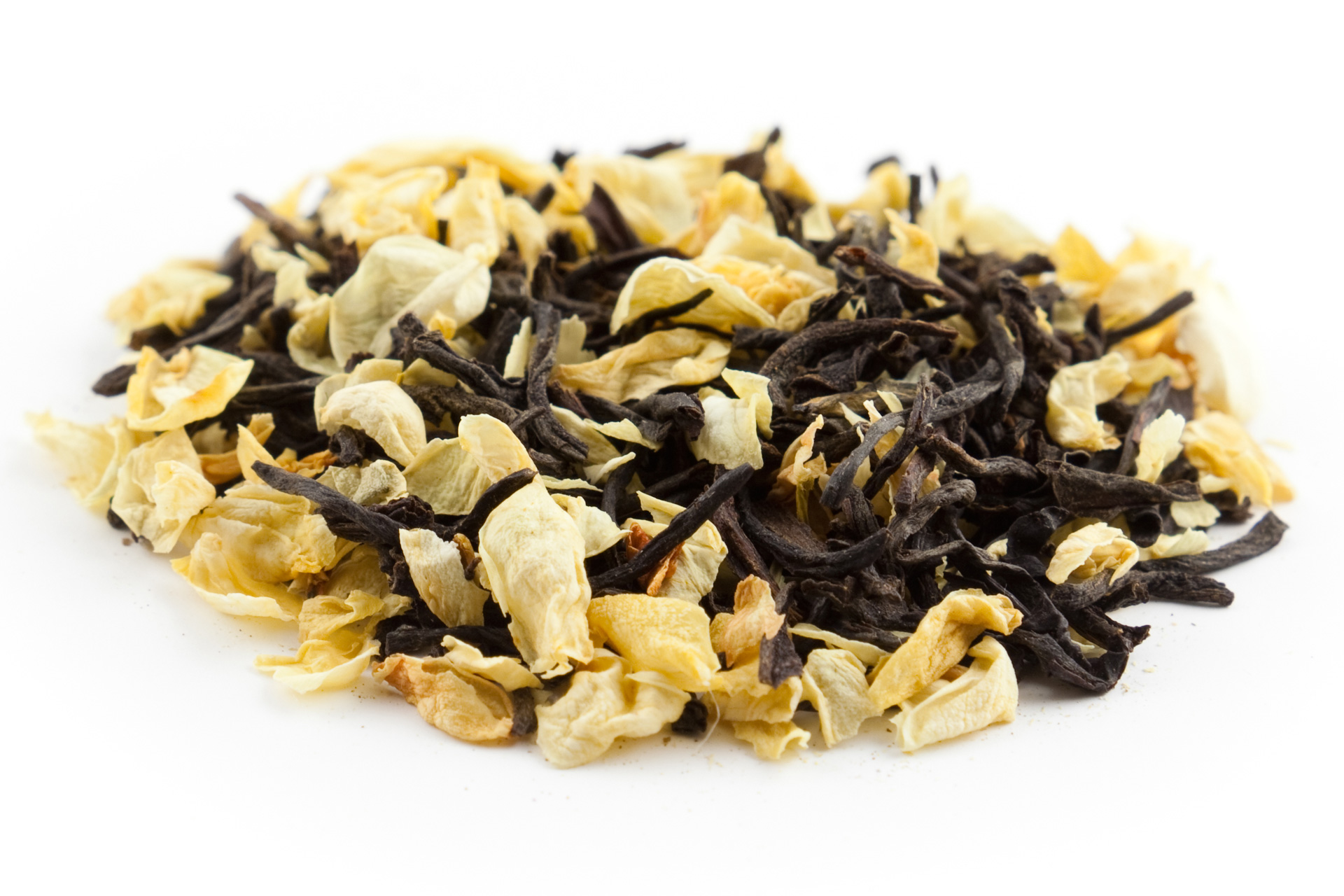
How tea is infused with jasmine
Success
You are now signed up for our newsletter
Success
Check your email to complete sign up
Tea leaves are traditionally scented by fresh jasmine blossoms. Late spring is the optimum time for harvesting green tea leaves, which are then dried via sunlight, steam or roasting. Sunlight yields the most delicate flavor, steaming brings out the sweetness, and roasting gives a bolder brew.
Jasmine’s fragrant flowers can be collected during the summer months of June, July and August. Although there are hundreds of species of jasmine, Common jasmine (Jasminum officinale) and Sampaguita (Jasminum sambac) are the two types grown for flavoring teas. A labor-intensive harvest of thousands of tiny buds, just before they open, takes place each early afternoon, after the morning dew has dissipated.
The gathered fresh buds are then combined with the previously dried tea leaves in a storing house. Through sandwiching alternating layers of tea leaves and jasmine buds, the highly absorbent dried leaves are infused with the released jasmine fragrance as the cooled buds open into flowers. As the flowers dry, they are replaced daily with fresh buds. For the best quality teas, the process may be repeated up to ten times before a final drying to seal in the flavor and freshness.
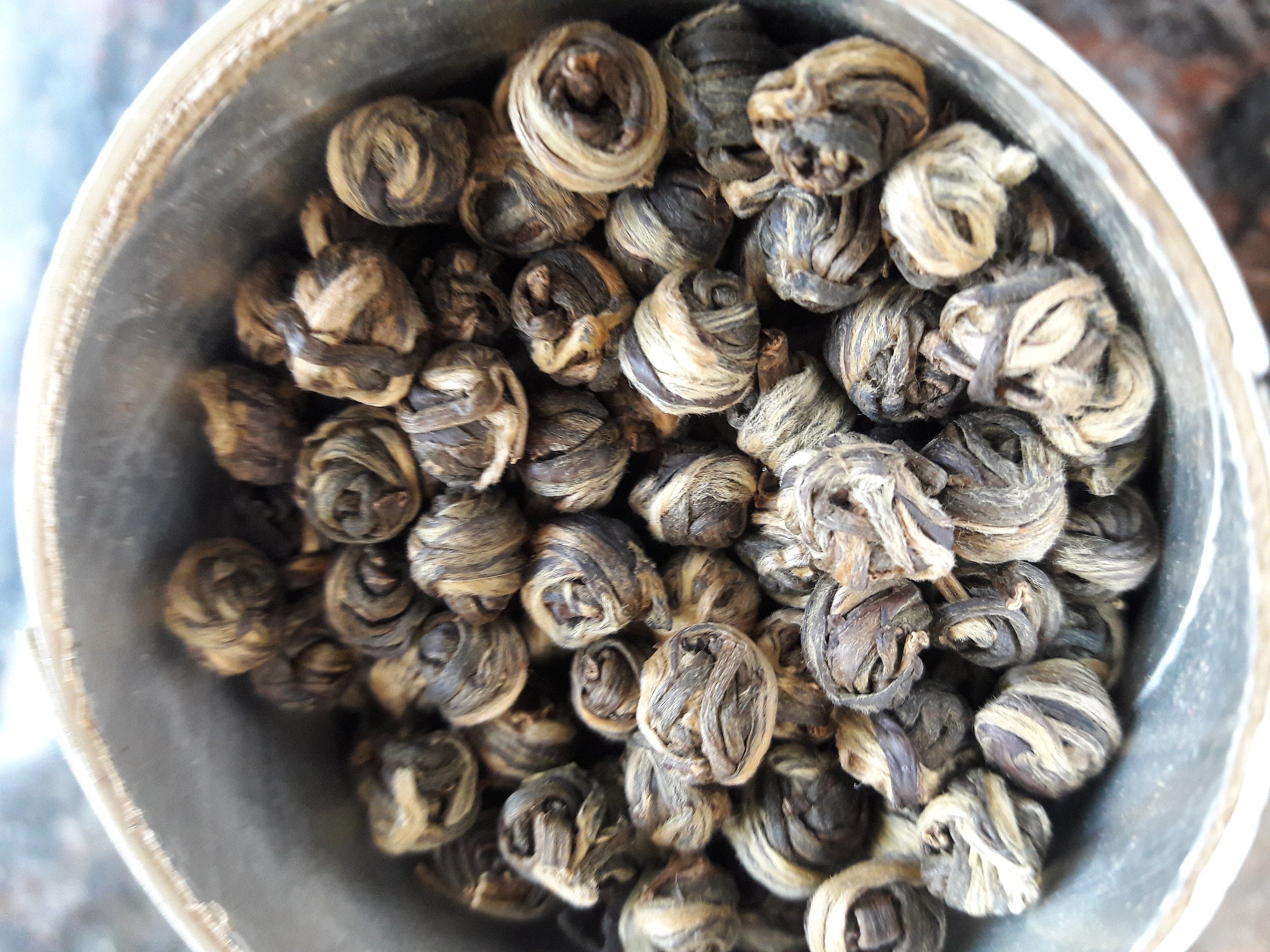
Jasmine pearl tea
Of the various types of jasmine tea available, jasmine pearl may be the most precious. This tea is made from the selective harvest of only the tips of each camelia stem, including the bud and two new leaves. After being slightly oxidized with heat or sunlight, they are hand-rolled into pearl shapes and dried.
Some tea producers roll fresh jasmine petals into the pearls, yielding a product with flowers included. This can be a tricky balancing act of timing, as the two plants have different optimal harvest seasons. Alternatively, the pearls are rolled and dried in the spring, and then infused in a similar fashion to that described earlier, during the summer when the flowers are at their peak of fragrance.
Brewing jasmine tea
Considering all the time and care that goes into producing this tea, you’ll want to be sure to brew it correctly for the best flavor.
For optimal results, use 2 grams of pearls or loose tea (tea bags will yield an inferior brew) per 8 ounces of filtered or spring water. If you like a more delicate flavor, use less tea. Find organic tea if possible, as chemicals can alter the flavor.
To prevent bitterness, avoid pouring boiling water on your leaves. If you have a temperature controlled kettle, set it between 160 and 180 F. Otherwise, wait two minutes after removing boiled water from heat before pouring. The best brew will come from consistent heat. You can pre-warm your cup or pot with hot water, and cover with a lid or cozy during the 2 to 3 minutes of steeping time.
If you are enjoying pearl tea, be sure not to miss the beautiful unfurling of the tightly rolled leaves in your cup (you are permitted to peek under the lid for this magical moment). If you have a jasmine plant at home, you can add fresh flowers to your choice of tea, but the jasmine aroma will be more delicate compared with a professionally produced jasmine tea.
Benefits of drinking jasmine tea
Not only is jasmine tea a delight to drink, it also has many health benefits. Jasmine is a notable aromatherapeutic scent, believed to ease anxiety and reduce stress and depression. The terpene linalool, found in both jasmine and lavender, has calming properties and can help lower the heart rate when inhaled. The scent is also thought to be an aphrodisiac.
The green tea that jasmine is most often paired with offers cancer fighting antioxidants as well as vitamins and minerals to support the immune system. While this tea has a much lower caffeine content than coffee, it contains enough of the stimulant to boost energy without giving you the jitters.
The tender young leaves of jasmine pearl tea, in particular, are especially high in antioxidants, and may help prevent heart disease and reduce the risk of cancer.
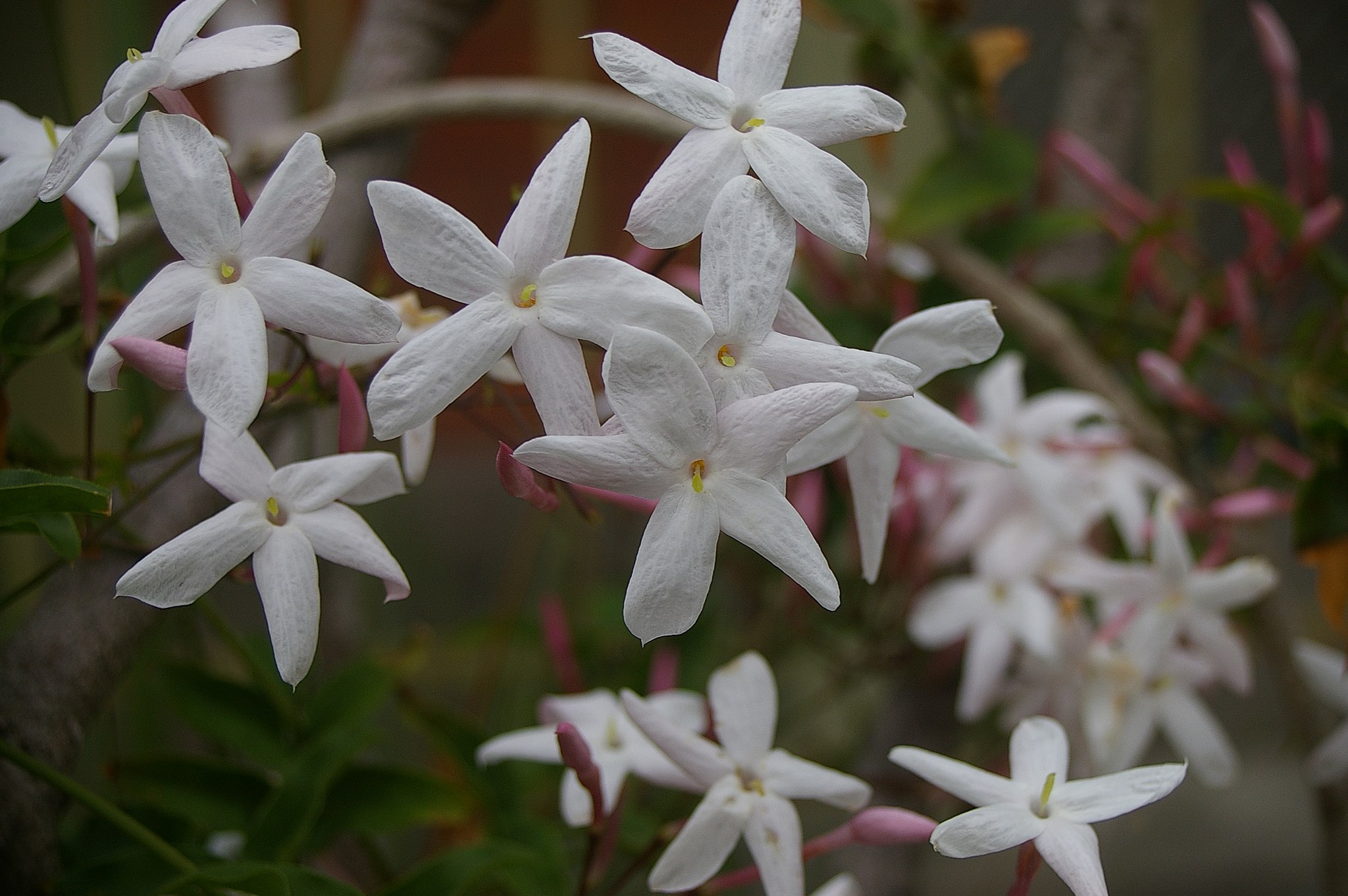
Growing jasmine
By now, the gardener in you must be itching to grow this amazing flower. Luckily for those of us in temperate climates, common jasmine (Jasminum officinale), is hardy in USDA hardiness zones six and seven, and actually requires a cold period for flower formation.
With dozens of species of jasmine, you are sure to find one to suit you and your conditions. Many jasmines can also be grown as indoor plants.
Planting guidelines
Jasmine can be planted outdoors any time between June and November. For summer blooming varieties like common jasmine, choose an area that gets plenty of sun. For the yellow-flowered, winter jasmine (Jasminum nudiflorum), a shadier spot is preferred.
Jasmine plants can grow quite large and they need plenty of space. Determine the mature size of your plant and space it accordingly; eight feet is a good general estimate for planning. Jasmine vines need a support structure, such as a trellis; or you can simply plant it beside a fence.
Your jasmine will thrive in a moist, well-drained sandy, living soil. Plant it deep enough so that the soil surface is at the same level as it was in its nursery pot. Mulch lightly during the growing season, with additional mulch for protection over the winter.
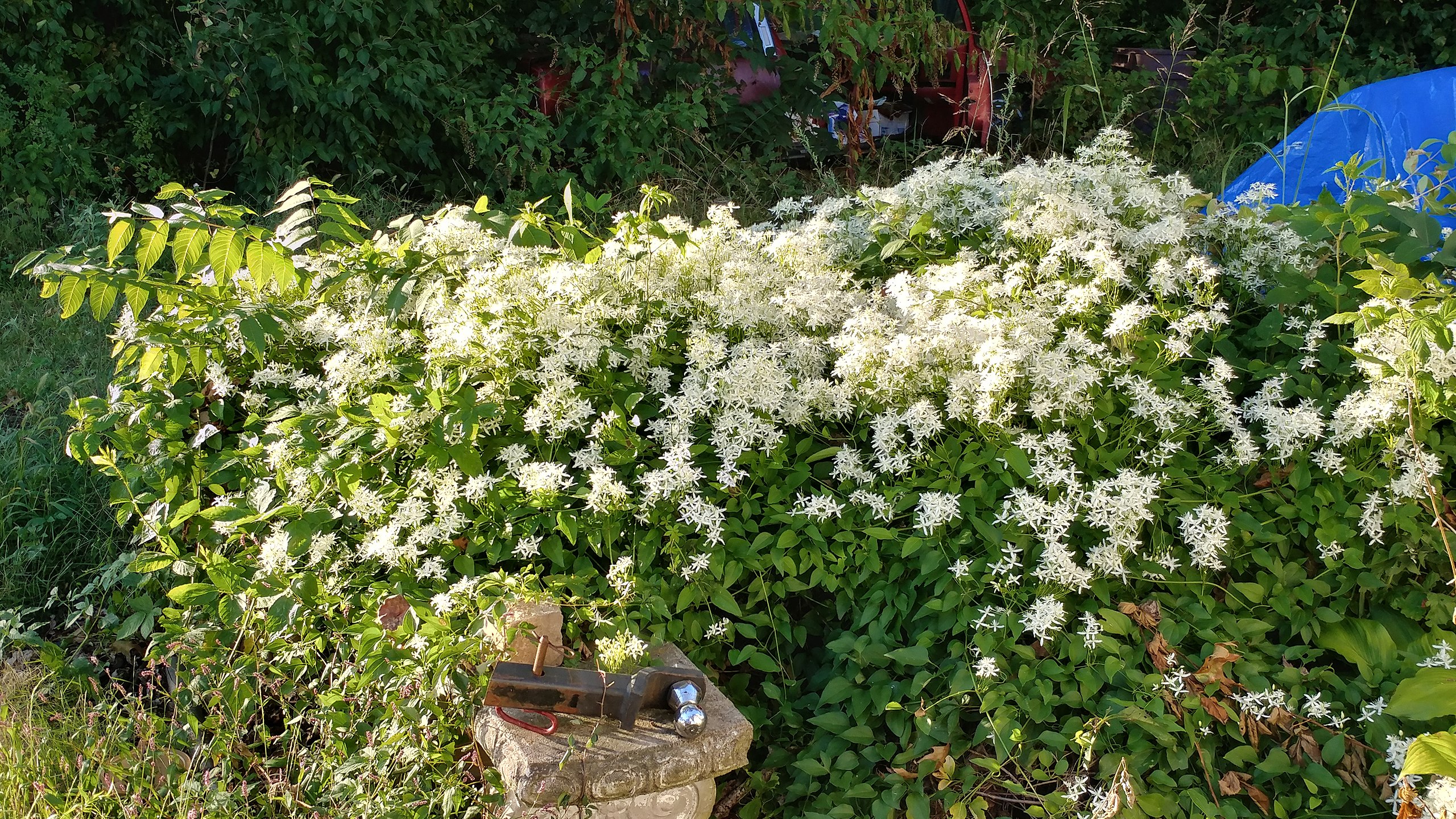
Caring for your jasmine
Jasmine plants like a steady supply of moisture. Rain or watering once a week is normally sufficient. Allow the surface to become dry before watering, but increase watering frequency during hot spells. Container grown outdoor plants will require watering every few days.
Vines can be trained by periodically weaving the tender, young shoots through a trellis, or loosely tying them to a fence as it grows. Use a gentle touch so as not to break the stems.
Proper pruning will promote new growth, for a lush and vibrant plant. Prune away any dead, damaged, or diseased stems. Timely pruning of stems that are finished flowering allows the plant to regrow before next season, ensuring another good bloom. Thin out crossing branches to prevent overcrowding, removing no more than one third of the living plant.
Jasmine grown indoors will want bright, filtered light. Place your plant close to, but not directly in a sunny window. Misting or keeping your plant on a pebble tray will ensure sufficient humidity. Vining plants will need regular pruning to keep them small, with the removal of spent flowering stems being the key to future blossoms.
Whether you want to experience the living beauty of a jasmine plant at home, or you will be satisfied simply sipping a wonderfully scented brew, jasmine is a flower that will brighten your life and lighten your heart.



